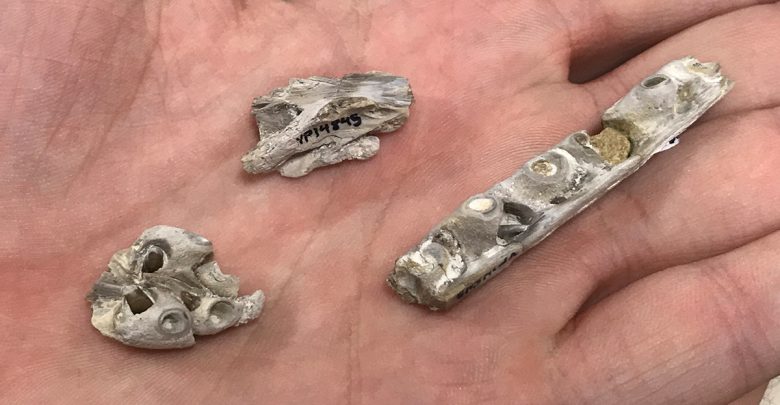 Supplied
SuppliedFinding an 80-million-year-old fossil of a baby sea monster was a thrill for University of Alberta professor Michael Caldwell, as it provided a rare glimpse into a part of the creature’s life cycle that was largely unknown until now.
The fossil is the smallest known Tylosaurus, an ancient species of aquatic lizard that grew to be 55 feet long and lived over 66 million years ago. Caldwell co-authored a study of the specimen with two former PhD students from his laboratory, Takuya Konishi and Paulina Jiménez-Huidobro. The article was published in October in the Journal of Vertebrate Paleontology.
The specimen was discovered in western Kansas, an area with rich fossil preservation, where it remained undisturbed in the collection of the Fort Hays Sternberg Museum in Kansas for almost 40 years. Caldwell said babies are very poorly represented in the fossil record in general due to their vulnerability to predators, so finding the specimen several years ago amongst the hundreds of fossils the collection houses was “exciting.”
“When we find a baby fossil, it’s exciting because we know we can learn something about the development of the skeleton of these animals,” he said.
Finding the metre-long fossil was only part of the work, as the team needed to identify the species it belonged to. Like humans, Tylosauruses have a larger head to body ratio as babies than as adults. Thus, it was hard for the team to assign a species to the small fossil since they couldn’t make straightforward comparisons to the skeletons of adult fossils.
To solve the puzzle of the fossil’s identity, the team studied its quadrate bone, which attaches the skull to the lower jaw, and is commonly used in lizard paleontology. They also studied snouts in previously collected fossils.
Adult Tylosauruses have long snouts, but the baby doesn’t have a snout, which initially confused the researchers. It was only when they looked at juvenile fossils that they realized Tylosauruses grow their snouts as they mature into adulthood.
“The problem is that like human babies, skeletal proportions [of a Tylosaurus] are very different,” Caldwell said. “So it took us a while to characterize the other features on this fossil and compare them to our known specimens, to conclude that it was actually a baby Tylosaurus and not a baby of another kind of lizard.”
This was an exciting conclusion for Caldwell, as it informed the team about the potential behavioural and feeding patterns of the lizards.
“So [the Tylosaurus’s] mom and dad are out there ramming into things, such as whales and some dolphins, in order to stun dinner, whereas the baby is probably eating shrimp and tiny fish near the coast,” Caldwell said. “And as they grow, their behaviours are going to change.”
Caldwell added his biggest reward with this project was working with his two students and watching them succeed. Konishi has since become a professor at the University of Cincinnati, while Jiménez-Huidobro has accepted a postdoctoral fellowship in Germany.
“The coolest part of this project for me, and of course the paleo is fun, is that both of my co-authors were grad students here in the lab… so it’s nice that the University of Alberta’s education system can continue to produce good science,” he said.




